Can I use my phone to control an RC helicopter?
Yes, you can control an RC helicopter with your smartphone using IR blasters or Bluetooth connectivity, enhancing convenience and functionality.
“Smartphones: The new frontier in RC aviation.”

Part 1: Introduction to Controlling RC Helicopters with Phones
Introduction to RC Helicopters
Remote control (RC) helicopters have fascinated enthusiasts for decades, evolving significantly from their early days. Initially, controlling these miniature aircraft was a complex task, requiring bulky, wired controllers. As technology advanced, wireless remotes became the standard, offering greater freedom and precision. The evolution of control mechanisms has been marked by innovations aimed at enhancing user experience and accessibility. Today, the advancements in digital technology have paved the way for the next leap in RC helicopter control: using smartphones.
Rise of Smartphone Controls
The transition from traditional remotes to smartphones as control devices for RC helicopters represents a significant shift in how people interact with their hobbies. This change has been driven by:
- Widespread smartphone usage: With smartphones now ubiquitous, more users are seeking ways to integrate their favorite devices with their hobbies.
- Technological advancements: Improvements in Bluetooth and infrared technology have made it possible to turn smartphones into versatile remote controllers.
The benefits of using smartphones for control include:
- Convenience: Most people carry their smartphones everywhere, which means they always have their RC helicopter controller on hand.
- Enhanced features: Smartphone apps offer a range of functionalities that traditional remotes lack, such as automatic hover, flight data logging, and customizable controls.
- Cost-effectiveness: For many, there’s no need to purchase a separate controller, making RC flying more accessible to beginners.
Using smartphones to control RC helicopters not only makes the hobby more accessible but also adds a layer of digital interactivity that enriches the flying experience. Learn more about the best apps for RC helicopter control and how these technological marvels are changing the game.
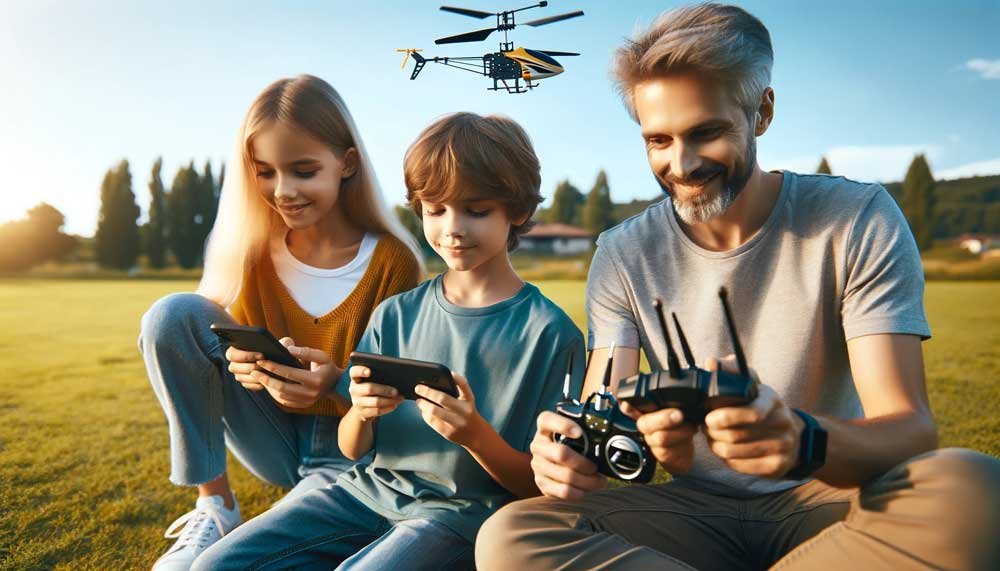
Part 2: How to Use Your Phone to Control an RC Helicopter
Technological Foundations
Controlling an RC helicopter with a smartphone leverages two primary technologies: IR blasters and Bluetooth connectivity. These innovations have transformed smartphones into versatile remote controls, offering a new dimension of interaction with RC helicopters.
- IR Blasters: These mimic traditional remote controls by emitting infrared signals. This technology enables direct communication between the smartphone and the RC helicopter, replicating the functionality of a standard RC controller.
- Bluetooth Connectivity: Offers a wireless connection over short distances. Modern RC helicopters equipped with Bluetooth can easily pair with smartphones, facilitating a smooth and responsive control experience.
The integration of these technologies into smartphones and RC helicopters alike has not only made the hobby more accessible but also introduced a level of convenience and functionality that traditional remotes cannot match.
Setting Up Your Phone for Control
To utilize your smartphone for controlling an RC helicopter, follow this comprehensive step-by-step guide:
- Compatibility Check: First, ensure that your smartphone and RC helicopter are compatible with either IR or Bluetooth control. Not all smartphones come with an IR blaster, and not all RC helicopters support Bluetooth.
- App Installation: Download the appropriate control app from either the Google Play Store or the Apple App Store. The specific app will depend on your helicopter’s brand and model.
- Device Connection: For IR control, direct your phone’s IR blaster towards the helicopter. For Bluetooth, pair the devices via your smartphone’s Bluetooth settings menu.
- Control Customization: Most apps offer customizable control settings, allowing you to tailor the flying experience to your preferences.
Following these steps will ensure a seamless setup process, enabling you to control your RC helicopter with your smartphone effectively. For additional tips and troubleshooting, refer to Troubleshooting Common Issues with Smartphone RC Control.
Advantages and Limitations
The debate between using a smartphone and traditional remotes for RC helicopter control centers on several key considerations:
Advantages:
- Convenience: Your smartphone is always within reach, making it easy to fly your helicopter without needing a separate controller.
- Advanced Features: Many apps offer innovative features such as flight tracking, customizable controls, and even simulated flight environments.
- Cost-Effective: Utilizing your smartphone for control can save you from purchasing an additional, often expensive, remote controller.
Limitations:
- Battery Drain: Using your smartphone as a controller can consume a significant amount of battery life.
- Control Range and Responsiveness: Bluetooth and IR connections may offer limited range compared to dedicated RC controllers, potentially affecting control precision and responsiveness.
While smartphones offer a modern and feature-rich alternative to traditional RC controllers, they are not without their drawbacks. Balancing these advantages and limitations is key to optimizing your RC flying experience.
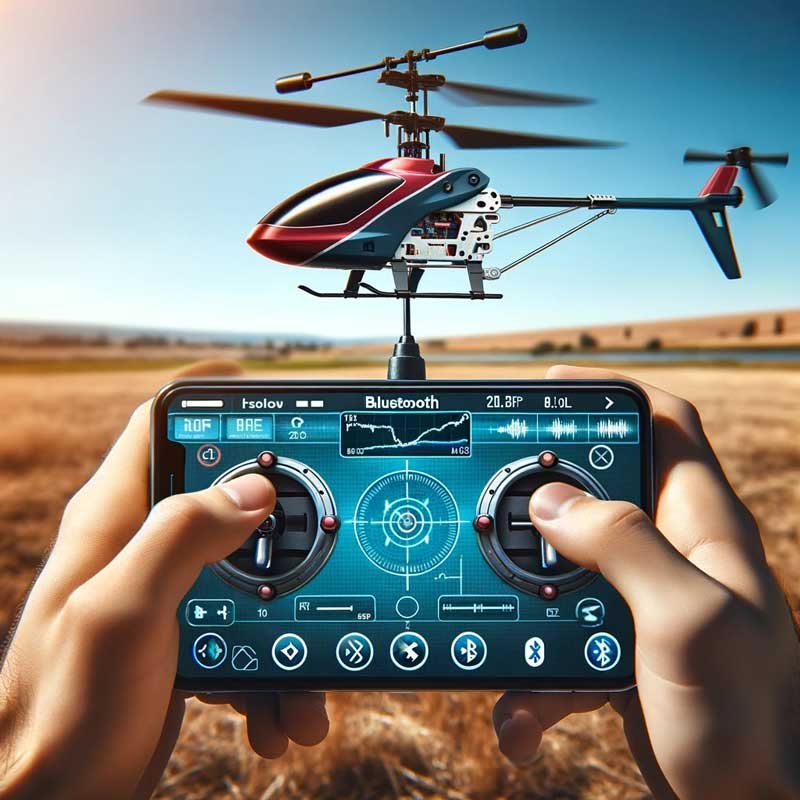
Part 3: People Also Asked
Can I Control My RC Helicopter With My Phone?
In the modern era of technology, the answer is a resounding yes. Controlling an RC helicopter with your phone has become a viable and increasingly popular option. This convenience is made possible through the use of two key technologies:
- IR blasters allow your phone to communicate with the helicopter in a manner similar to traditional remote controls.
- Bluetooth connectivity provides a wireless link between your smartphone and the helicopter, offering a seamless control experience.
These advancements have enabled smartphone apps to become sophisticated control panels, offering features beyond those of standard remotes.
How Do You Control an RC Helicopter?
Controlling an RC helicopter involves a few fundamental steps, whether you’re using a traditional remote or a smartphone:
- Power On: Ensure both your RC helicopter and the control device (remote or smartphone) are charged and turned on.
- Pairing: For smartphone control, you’ll need to connect the two devices. This could involve aligning an IR blaster or pairing through Bluetooth, depending on your helicopter’s technology.
- App Installation: If you’re using a smartphone, download the control app specific to your helicopter model. This app will provide on-screen controls and may offer additional features such as flight data logging or virtual reality simulations.
By following these basic steps, you can gain full control over your RC helicopter, navigating it through complex maneuvers and enjoying the thrill of flight. For more detailed instructions, including troubleshooting tips, visit Troubleshooting Common Issues with Smartphone RC Control.
How Do You Sync an RC Helicopter?
Syncing your RC helicopter with your control device is crucial for a responsive and enjoyable flying experience. Here’s how to do it:
- Traditional Remote: Turn on the helicopter and then the remote. Most models automatically sync after a few seconds. If not, consult your manual for a specific syncing button or procedure.
- Smartphone Control: Ensure your phone’s Bluetooth is on or the IR blaster is aligned with the helicopter. Open the control app and follow the on-screen instructions to establish a connection.
Each helicopter model may have its nuances, so referring to your user manual or the app’s help section can provide model-specific guidance.
How to Make a Remote Control Helicopter Circuit?
Creating a remote control circuit for an RC helicopter is an advanced project that requires a good understanding of electronics and soldering. Here’s a simplified overview:
- Components: Gather all necessary components, including a transmitter and receiver pair, motors, a battery, and control elements (potentiometers or a microcontroller for more sophisticated setups).
- Circuit Design: Design the circuit layout, ensuring the transmitter and receiver can communicate effectively to control the helicopter’s motors.
- Assembly: Carefully solder the components according to your circuit design. This includes connecting the motors to the receiver and ensuring the power supply is correctly configured.
- Testing and Troubleshooting: After assembly, test the circuit with your helicopter. Be prepared to troubleshoot issues such as range limitations or unresponsive controls.
For detailed instructions and circuit diagrams, educational resources and DIY forums offer extensive guides that can help you through the process. Remember, working with electronics requires caution and proper safety measures.
In conclusion, whether you’re looking to control your RC helicopter with a smartphone, sync devices, or even build your own remote control circuit, the possibilities are vast. With a bit of knowledge and the right tools, you can enhance your RC helicopter flying experience significantly.
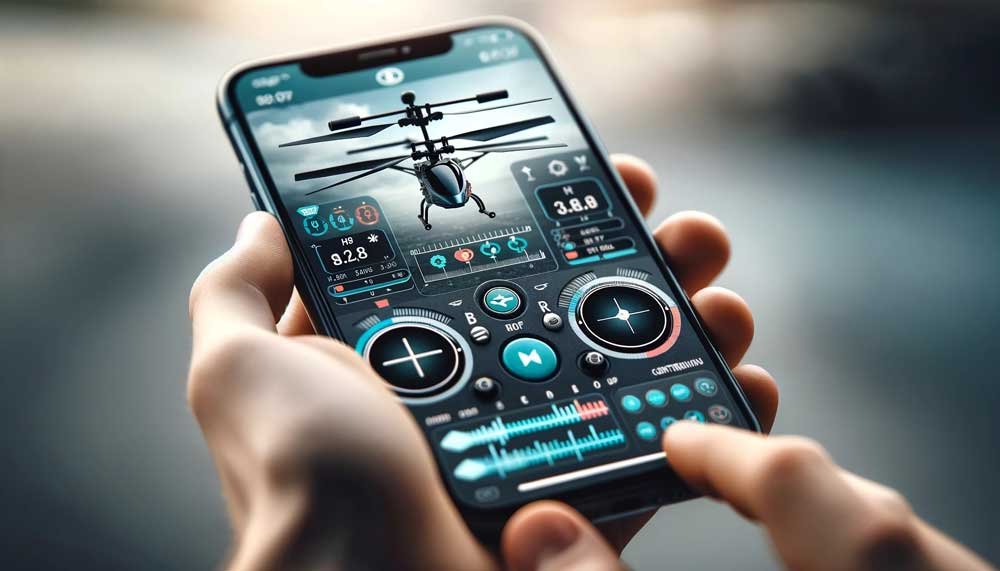
Part 4: Conclusion
In the realm of RC helicopter flying, the integration of modern technology has transformed how enthusiasts interact with their hobby.
The ability to control these agile machines with a smartphone is not just a novelty but a testament to the incredible strides made in personal technology and wireless communication.
The use of IR blasters and Bluetooth connectivity has democratized the control of RC helicopters, making the hobby more accessible to a broader audience. The convenience of having a controller always in your pocket, combined with the advanced features offered by dedicated apps, significantly enhances the user experience.
However, it’s important to recognize the limitations, such as potential battery drain and reduced range compared to traditional remotes, which could affect your flying experience.
Despite these challenges, the advantages of smartphone control—particularly the cost-effectiveness, portability, and advanced functionalities—offer compelling reasons to embrace this technology.
As we look to the future, ongoing improvements in smartphone hardware and app development promise to further refine and expand the capabilities of RC helicopter flying, making it an even more exciting and engaging hobby for tech enthusiasts and flying aficionados alike.
In sum, whether you’re a seasoned pilot or new to the world of RC helicopters, the opportunity to harness the power of your smartphone as a remote control opens up a new horizon of possibilities, blending the thrill of flight with the cutting-edge of technology.
Related Posts
RC ERA C129 V2 Review: What Makes It Stand Out
Explore the RC ERA C129 V2’s advanced features, its suitability for beginners, and how it’s revolutionizing remote-controlled flight.
Why Choose RC ERA C187 for Your Hobby
Explore the exciting world of the RC ERA C187 Helicopter. This guide offers tips, reviews, and techniques for beginners and pros alike.
RC ERA C127AI Review: Tech Specs and User Feedback
Explore the revolutionary RC ERA C127AI with advanced tech, user-friendly features, and expert reviews. Learn why it’s the top choice for RC enthusiasts.
More Models
RC ERA C129 V2 Review: What Makes It Stand Out
Explore the RC ERA C129 V2’s advanced features, its suitability for beginners, and how it’s revolutionizing remote-controlled flight.
Why Choose RC ERA C187 for Your Hobby
Explore the exciting world of the RC ERA C187 Helicopter. This guide offers tips, reviews, and techniques for beginners and pros alike.
RC ERA C127AI Review: Tech Specs and User Feedback
Explore the revolutionary RC ERA C127AI with advanced tech, user-friendly features, and expert reviews. Learn why it’s the top choice for RC enthusiasts.

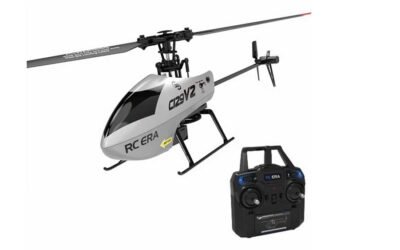
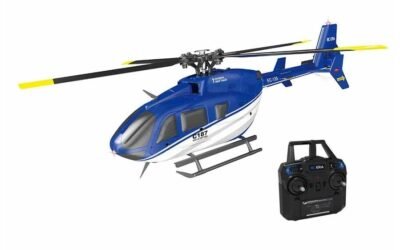
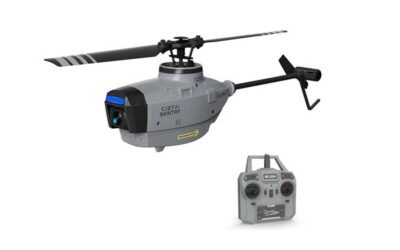
0 Comments